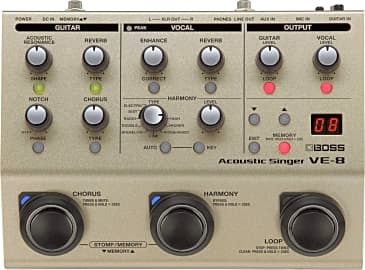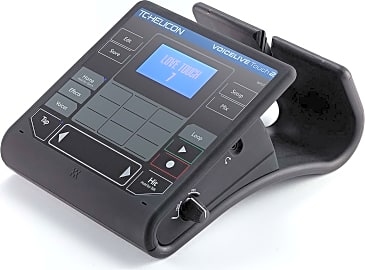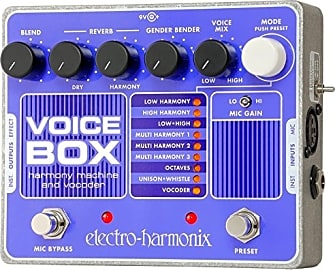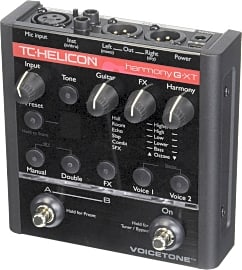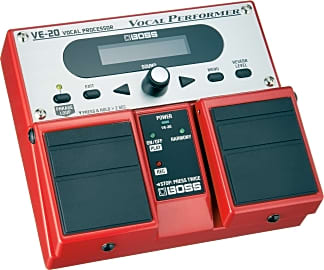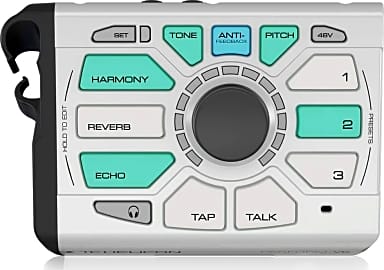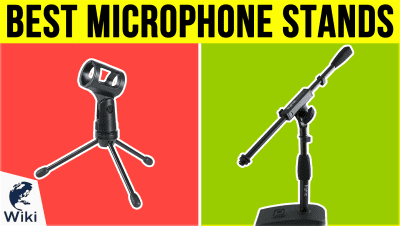The 10 Best Vocal Processors

This wiki has been updated 38 times since it was first published in July of 2015. Whether you are performing live on stage or recording in the studio, one of these vocal processors will give you the effects you need to sound as good as any professional singer. They allow both experienced and burgeoning vocalists to expand their repertoire and creativity, providing pitch-correcting auto-tune, multiple harmonies, and a litany of other useful features. When users buy our independently chosen editorial choices, we may earn commissions to help fund the Wiki.
Editor's Notes
August 24, 2020:
Among a few notable upgrades on this iteration of our ranking, we added the Boss Acoustic VE-8 in place of the previously included VE-5, which served musicians better as a desktop option than in live settings, both because of its build quality and its design. The 8 offers a lot more in terms of nuanced control over specific aspects of your sound, particularly when it comes to the quality of its harmonies, from which you can select high and low, radio, and distorted, among other presets.
That question of whether you're going to be using this in professional settings is an important one, especially when you look at something like the Behringer 3D Virtualizer FX2000 or the Tascam TA-1VP. Both of these are designed to live in racks with other effects, and while you certainly could just hook them up to your instrument and microphone and set them off to the side of the stage, they really would be better suited to a professional live or studio environment. The TC Electronic 8005, conversely, is something you'll have at your fingertips throughout a performance, especially if you choose to mount it to your microphone stand, a feature that only it and the TC Electronics Helicon Perform V can boast.
July 09, 2019:
Thanks to its exceptional variety of effects, its MIDI ports, and its durable build, the Tascam TA-1VP easily retained its top spot in our ranking. The biggest jump up comes in our second slot, with the Behringer FX2000. It's a bit less intuitive to use than the Tascam, but its ability to combine effects in parallel or serial configurations dramatically increases its potential uses. We sent the DigiTech Vocalist Live Pro packing due to concerns around availability, but introduced a few new models that will give users a lot of range in product selection. One of those comes from Electro-Harmonix — their Voice Box at number five — which creates a remarkably natural harmony in up to four parts, with nuanced blending capabilities and even a gender bender to manipulate the apparent sex of the singer. We also introduced a pair of models by TC Electronic that are designed to attach to your mic stand, making it easy to run the XLR cable through them, and even easier to make changes to your settings without having to stoop over to a pedal board or walk over to a rack.
Your Voice, But Better
They can also create loops and phases and multiple-part harmonies to accompany you on stage if you're performing solo.
I'm not the best singer. I've taken some lessons, and I've been singing in bands since I was 12, but I know my limitations. Fortunately for me, my weaknesses are more in vocal strength and consistency than in pitch, but if I suffered from pitchiness live and wanted a processor that could correct me on the fly without making me sound like a demented robot, I'd grab one of these babies.
That's not their only use, either. These vocal processors take in the signal you sing and from there they can add simple effects like a slight gain to make you sound like Julian Casablancas of The Strokes, or wild effects to make you sound like a member of Daft Punk.
They can also create loops and phases and multiple-part harmonies to accompany you on stage if you're performing solo.
Now, some people are going to argue that this is cheating, that putting the voice through any medium is a violation of its purity. You don't need those people in your life, but if you want to keep them and you want to state your case, simply argue that all technological creation is an extension of the human mind, which is the only place where sound is actually formed because it's the only place where sound is recognized as a form. Of course, if the metaphysical argument fails, you could always point out that even Dylan went electric eventually.
The Rack, The Floor, Or The Table?
Okay, I know that sounds like an offer from someone about to torture you in the most medieval way imaginable, but it's actually one of the main determining factors in your choice of vocal processor.
As you scroll through our list, you'll notice that there are three basic builds for your vocal processor.
As you scroll through our list, you'll notice that there are three basic builds for your vocal processor. The long, thin builds are rack-mounted processors, designed to fit in a rack along with other effects processors for permanent installation in a studio or for transportation on tour. If you're a serious touring artist with a need for something set in a durable housing, these are the processors you'll want to look at first. They will require you to purchase said housing, and the empty slots therein will probably tempt you into buying additional rack-mounted effects, so this is likely the priciest option in the long run.
There are also processors on our list that look like pretty straightforward floor pedals. That's because they are. The foot pedal has long been the go-to interface for musicians in all walks of performance, whether in the studio, on stage, or at home. They provide the convenience of instant toggling and interaction that a rack mount does not, and they're often built to withstand tremendous amounts of abuse, so you don't have to buy any additional hardware to ensure their lifespan.
The other style of processor, the table-top make, is much more suited to the needs of the in-home recording artist and coffee house performer. They have just as much versatility and processing power as the competition, but they suffer from the weakest construction and a less efficient interface. If you're a lighter performer or you just happen to take immaculate care of your gear, these could be the processors for you.
Cher-ing Is Caring: A History Of Vocal Processing
When I was a teenager, Cher released her international hit single "Believe." In it, the legendary performer took a specific processor called Auto-tune, originally designed to correct out-of-tune singers, and used it to create an audio experience with her voice that the masses had never before heard. It's the effect you hear whenever a singer's voice seems to digitally jump from one note to the next.
Cher's case is a pretty clear example of vocal processing in the digital age, but the art has existed for a long time in various analogue forms.
Open a playbill, and you're liable to see the characters listed under the heading 'Dramatis Personae,' the Latin for 'masks of the drama.'
Open a playbill, and you're liable to see the characters listed under the heading 'Dramatis Personae,' the Latin for 'masks of the drama.' In ancient Greek theatre, actors wore masks in part to symbolize their character in a given play, but also because the masks were built to project sound outward. In fact, the root of the word mask, 'persona' can be broken down into 'per,' which means through, and 'son' a root word for sound.
Things stayed pretty stagnant from there until the advent of recorded sound. Any and all devices for the recording and playing back of voices could be considered kinds of vocal processing, but the actual processing of audio signals based on the quality state of their electrical transmissions was vastly expanded in the radio age.
Those radio developments all made their way into the musical recording studios which found an interest in slightly more experimental tampering like compression and gain in the 1950s and 60s. Phil Spector and George Martin, in particular, were two pioneers in using processors designed to clean up vocals and turn them against the original signals to create new and exciting soundscapes.
From there, all bets were off, and effects were only limited by the imaginations of the audio engineers and the available hardware. Today, in the digital age, one can affect a voice to do almost anything.


